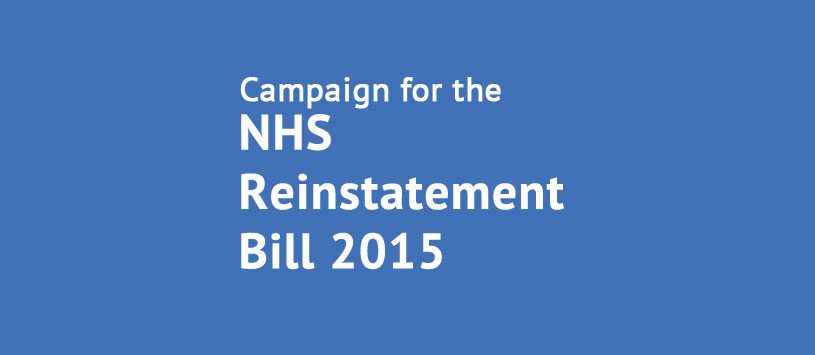Junior doctors have now agreed to ballot for industrial action. If they go on strike it will be for the first time in 40 years. Negotiations between the BMA and the body known as NHS Employers have broken down because NHS Employers want to extend routine working hours from 60 per week to 90, remove safeguards which protect both patient and doctor safety and reduce junior doctors pay. Junior doctors will work longer more antisocial hours for less money and with fewer breaks.
But the real reasons for the squeeze on staff and junior doctors pay and terms and conditions are not being explained to them or to the public. At the root of these negotiations is a cost-cutting exercise which will do nothing to enhance patient safety. Expenditure on the NHS is falling as a percentage of GDP from 6.5% in 2012-13 to 6.2% in 2015-16. Outgoing NHS chief executive David Nicholson told everyone that these cuts would mean the NHS would need to find 20 billion pounds in efficiency savings by 2015. Against this background of cuts in total health expenditure come three main pressures – the private finance initiative, escalating drug budgets, and the costs of marketisation and privatisation of clinical services.
Annual payments for PFI hospitals are ring-fenced and must be paid before any money can be allocated for staff or patient care. However, PFI payments are linked to the retail price index and hence the cost rises year on year while the NHS budget is falling. Some PFI hospitals may be paying as much as 30% of their annual income out on PFI charges. The NHS may pay more than ten times the original construction costs over the life of the contract.
Meanwhile the cost of medicines is rising and takes a bigger share of the NHS budget year on year. In 2013-14 the drugs budget increased by 7.6% from the previous year – to 14.4 billion pounds. The costs of medicines rose by 15% in hospitals and 3.4% in primary care in 2013-14 compared with the year before. The pharmaceutical industry makes between 20% and 40% profit on the medicines it sells to the NHS. Last year, US giant Pfizer, which supplies the NHS with drugs and is the world’s largest drug company by pharmaceutical revenue, made a 42% profit margin. This means that up to 6 or 7 billion pounds is likely to be flowing out of the NHS and into pharmaceutical company profit each year.
And now to cap it all, since the Health and Social Care Act 2012, the government has embarked on the break-up of the NHS and privatisation of clinical and non clinical services, wasting billions of pounds on commercial contracts, legal fees and management consultants. In all instances money is diverted to shareholders rather than patient care. In the US, 30% of the health care dollar is spent on market administration. The NHS used to spend less than 6% but it is likely to be approaching 30% now. Once services are in the market, the NHS has no direct control over any of these costs. PFI is a good example where the contracts are signed for 30 to 60 years. The only costs the NHS can control are the staff it employs. Since staff costs are the biggest element of the NHS budget, NHS Employers which represent all the NHS Trusts have responded by cutting the terms and conditions of staff.
It’s the patients, staff and taxpayers who lose out from the marketisation of the NHS. It’s the patients and doctors who lose out when they cannot provide safe and high quality care.
This is why in supporting the junior doctors strike we must also call for the market to be taken out of the NHS. The NHS Bill 2015 currently in parliament – cosponsored by Caroline Lucas, Jeremy Corby and John McDonnell (amongst others) – and which has the support of the BMA would do just that.
